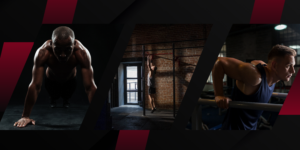
Isolation exercises are an excellent way to target specific muscles and improve strength, muscle definition, and overall fitness. Unlike compound exercises, which work multiple muscle groups simultaneously, isolation exercises focus on a single muscle or joint, allowing for greater emphasis and control. Here’s a comprehensive guide to 24 effective isolation exercises that can help you strengthen various muscle groups.
Upper Body Isolation Exercises
- Bicep Curl
- Target Muscle: Biceps brachii
- How to Do It: Stand or sit with a dumbbell in each hand, arms at your sides. Curl the weights up while keeping your elbows close to your body.
- Tricep Kickback
- Target Muscle: Triceps brachii
- How to Do It: Bend forward slightly with a dumbbell in each hand, arms at 90 degrees. Extend your arms back until fully extended, then return.
- Lateral Raise
- Target Muscle: Deltoids
- How to Do It: Stand with dumbbells at your sides. Raise your arms out to the sides until they are parallel to the ground.
- Front Raise
- Target Muscle: Anterior deltoids
- How to Do It: Hold a dumbbell in each hand and raise them in front of you to shoulder height, keeping your arms straight.
- Chest Fly
- Target Muscle: Pectoralis major
- How to Do It: Lie on a bench with dumbbells in hand, arms extended above you. Lower the weights to your sides while keeping a slight bend in your elbows.
- Lying Tricep Extension
- Target Muscle: Triceps brachii
- How to Do It: Lie on a bench holding a dumbbell above your head. Bend your elbows to lower the weight towards your forehead, then extend back up.
Core Isolation Exercises
- Plank
- Target Muscle: Core
- How to Do It: Get into a push-up position but rest on your forearms instead of your hands. Keep your body straight and hold.
- Side Plank
- Target Muscle: Obliques
- How to Do It: Lie on your side, prop yourself up on one forearm, and lift your hips off the ground, forming a straight line from head to feet.
- Russian Twist
- Target Muscle: Obliques
- How to Do It: Sit on the floor with your knees bent and lean back slightly. Hold a weight with both hands and twist your torso to each side.
- Leg Raises
- Target Muscle: Lower abs
- How to Do It: Lie on your back with legs straight. Lift your legs up to a 90-degree angle and then lower them without touching the floor.
Lower Body Isolation Exercises
- Leg Extension
- Target Muscle: Quadriceps
- How to Do It: Use a leg extension machine to extend your legs straight out while seated.
- Leg Curl
- Target Muscle: Hamstrings
- How to Do It: Use a leg curl machine to curl your legs towards your buttocks while lying face down.
- Calf Raise
- Target Muscle: Gastrocnemius and soleus
- How to Do It: Stand on the edge of a step with your heels hanging off. Raise your heels to stand on your toes, then lower back down.
- Hip Abduction
- Target Muscle: Gluteus medius
- How to Do It: Stand with a resistance band around your legs, and lift one leg out to the side, keeping it straight.
- Hip Adduction
- Target Muscle: Adductors
- How to Do It: Use an adduction machine to pull your legs together from a wide stance.
Full Body Isolation Exercises
- Dumbbell Shoulder Press
- Target Muscle: Deltoids
- How to Do It: Sit or stand with a dumbbell in each hand at shoulder height. Press the weights overhead until your arms are fully extended.
- Dumbbell Chest Press
- Target Muscle: Pectoralis major
- How to Do It: Lie on a bench holding dumbbells at chest level. Press the weights straight up until your arms are extended.
- Dumbbell Row
- Target Muscle: Latissimus dorsi
- How to Do It: Bend forward at the hips with a dumbbell in each hand. Pull the weights towards your ribcage, squeezing your shoulder blades together.
Tips for Effective Isolation Training
- Form Over Weight: Focus on maintaining proper form rather than lifting heavier weights. This helps prevent injury and ensures you’re effectively targeting the intended muscles.
- Mind-Muscle Connection: Concentrate on the muscle you are working on. This mental focus can enhance your workout effectiveness.
- Include Rest Days: Allow muscles to recover to prevent overtraining and injuries. Aim for 48 hours of recovery before working the same muscle group again.
- Combine with Compound Exercises: While isolation exercises are beneficial, they should complement a well-rounded fitness routine that includes compound movements for balanced muscle development.
Conclusion
Incorporating these 24 isolation exercises into your workout routine can significantly improve your muscle strength and definition. Whether you’re a beginner or an experienced fitness enthusiast, isolation exercises offer a great way to focus on specific muscle groups, leading to better results in your overall fitness journey. Always consider consulting with a fitness professional to ensure proper technique and to tailor exercises to your personal goals.





